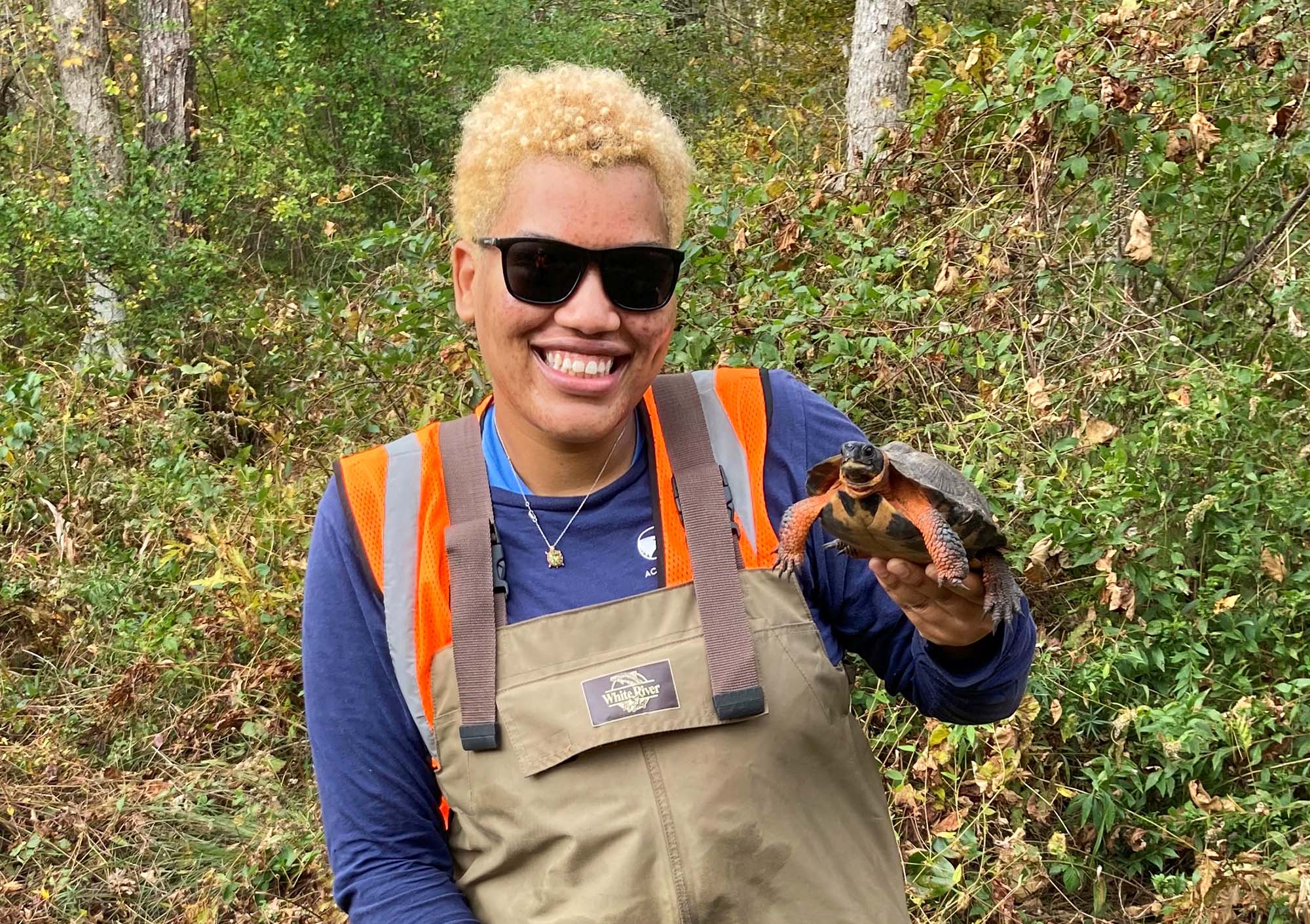KINGSTON, R.I. – December 14, 2021 – Wood turtles are among the rarest turtles in Rhode Island, and yet little is known about where they can be found in the state and what conservation strategies may boost their populations.
A University of Rhode Island graduate student is taking the first steps in addressing those questions by surveying the state to identify local populations of the turtle and the habitat they require from season to season.
“There has never been a statewide survey of wood turtles in Rhode Island before, and before we can protect them, we have to figure out where they are,” said Chloe Johnson, a native of Atlanta, Georgia, who is in her second year of studying the turtles as part of her master’s degree.
Wood turtles, which have been proposed for inclusion on the federal endangered species list, are found from Virginia to southern Canada and west to Minnesota. Sporting orange patches on their neck and legs, they spend time in slow-moving rivers and streams as well as in terrestrial environments like forests, croplands and pastures. They nest in open sandy areas.
Working in collaboration with URI Associate Professor Nancy Karraker and Scott Buchanan at the Rhode Island Department of Environmental Management, Johnson conducted upland surveys during the summer of 2021 in hopes of finding nesting turtles, and she scoured rivers and streams in fall and spring. So far, she has identified 13 locations where the turtles have been documented. But finding the turtles has been harder than she expected.
“I’ve done more than 70 surveys and found fewer than 15 wood turtles,” she said. “They’re much more difficult to find than I anticipated. In the summer I went three weeks without seeing one. It’s hard, but when you find one it’s so much more rewarding.”
In the upcoming field season, when Johnson finds a wood turtle, she will attach a GPS data logger on its shell so she can track its movements.
“We want to know where the turtles go at night. Are they in fields or forests or streams?” she said. “How often do they cross roads? We’ve seen and heard from a lot of people that they’re seen crossing roads. Maybe we can find potential hotspots of road mortality.”
According to Johnson, wood turtles are threatened by habitat loss and fragmentation from the construction of roadways, houses and other human-based development. Their streams are also being negatively impacted by these developments. In addition, their bright coloration makes them popular in the pet trade and a prime target for wildlife traffickers.
“They’re endangered range-wide,” said Johnson, “but compared to surveys in Virginia, they’re much harder to find here in Rhode Island.”
The URI student anticipates completing her wood turtle research by next fall, when she hopes to have located previously unidentified breeding areas that state wildlife officials can include in future management and conservation plans.

